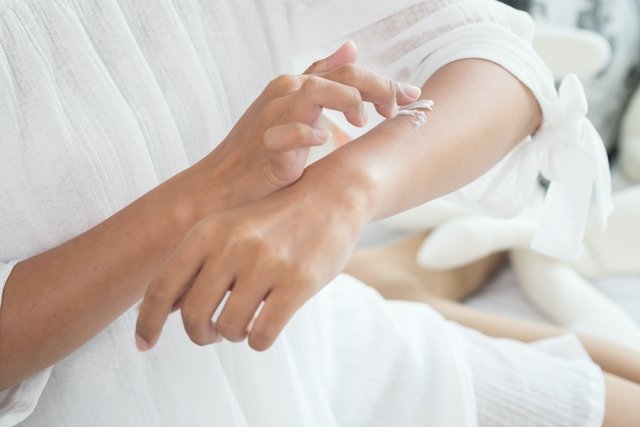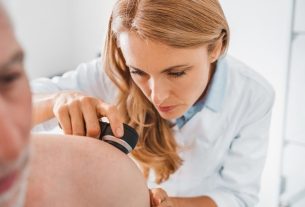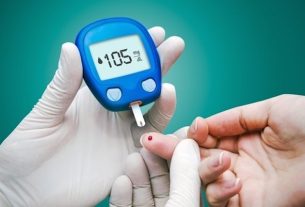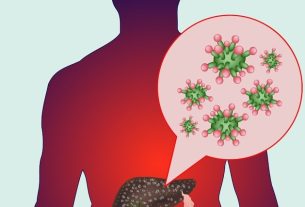White cloth remedies are antifungal ointments, lotions or sprays, such as ketoconazole, miconazole or clotrimazole, which should be used on the affected skin, as they act to prevent the fungus from growing on the skin. Furthermore, in some cases, the doctor may recommend the use of antifungal tablets, such as fluconazole or itraconazole.
White cloth is a skin infection, scientifically known as Tinea versicolor or pityriasis versicolor, caused by the fungus Malassezia furfur, leading to the emergence of symptoms, such as itching and white or brownish spots on the skin, especially in the arms and trunk region. Know how to identify all the symptoms of white cloth.
Remedies for white cloth should be recommended by a dermatologist or general practitioner, after evaluating the symptoms, and thus indicate the best remedy on an individual basis. In addition to treatment with medication, some precautions are also important to speed up recovery and prevent reinfection, such as drying the skin well after bathing, avoiding excessive heat or exposure to the sun.

White cloth ointments
White cloth ointments are generally the first treatment option recommended by the dermatologist, as they help eliminate the Malassezia furfur fungus from the skin, relieving symptoms.
The main ointments for white cloth are:
- Ketoconazole 2% cream (Nizoral, Lozan or Conazol), once a day for about 4 weeks;
- Clotrimazole 1% cream (Canesten or Clotrimix), 2 to 3 times a day for about 1 to 3 weeks;
- Isoconazole nitrate 1% cream (Icaden), once a day, for 2 to 4 weeks of treatment;
- Miconazole nitrate 2% cream, twice a day, for 2 to 5 weeks of treatment;
- Ciclopirox olamina 1% cream (Micolamine), twice a day, for 2 weeks of treatment;
- Terbinafine hydrochloride 1% cream (Funtyl), 1 to 2 times a day, for 2 weeks of treatment;
- Oxiconazole nitrate 1% cream (Oxipelle), once a day, preferably at night, for at least 3 weeks of treatment;
- Fenticonazole nitrate cream 0.02 mg/g (Fentizol), 1 to 2 times a day, for the duration of treatment determined by the doctor.
White cloth ointments should be applied to clean, dry skin, in the affected region and around the lesion, for the duration of treatment advised by the doctor, and used until the lesions disappear, which may take around 1 to 4 weeks.
Furthermore, treatment with white cloth ointments should be continued for approximately 1 to 2 weeks after symptoms disappear, according to medical advice.
Taking care of your health has never been easier!
Lotions or topical solutions
Antifungal topical lotions or solutions are another topical treatment option that may be recommended by your dermatologist for treating white cloth.
The main antifungal lotions that may be recommended by your doctor are:
- Ciclopirox olamina10 mg/mL lotion (Micolamine), twice a day, for 2 weeks of treatment;
- Miconazole nitrate20mg/mL lotion, twice a day (morning and evening), for 2 to 5 weeks of treatment;
- Oxiconazole nitratetopical solution 10 mg/mL (Oxipelle), once a day, preferably at night, using a flexible swab or cotton ball, for at least 3 weeks of treatment;
- Clotrimazoletopical solution in drops or spray 10 mg/mL (Canesten), 2 to 3 nebulizations of the spray, twice a day, or 2 to 3 drops, 2 to 3 times a day, for 1 to 3 weeks;
- Fenticonazole nitratespray 20 mg/mL (Fentizol), 1 to 2 times a day, for the treatment time determined by the doctor.
Antifungal topical lotions or solutions should be used as directed by a dermatologist, for the duration of treatment advised by the doctor.
Antifungal tablets
Antifungal tablets may be recommended by the dermatologist when the area affected by the white cloth is very large, or when the person has a problem that affects the immune system, for example.
In these cases, the dermatologist may only recommend the use of tablets, such as:
- Fluconazole 150 mg capsules (Zoltec or Triazol), with a dose of 150 to 300 mg being generally recommended, orally, once a week, for 2 to 4 weeks of treatment;
- Itraconazole 100 mg capsules (Sporanox or Itraspor), with a dose of 200 mg being generally recommended, once a day orally, for 7 days of treatment.
In some cases, the doctor may recommend the use of more than one medication simultaneously, such as taking pills and applying a cream, for example.
How to speed up treatment
For the white cloth to disappear faster, some skin care must be taken, such as washing and drying the affected area well before applying medications, avoiding allowing sweat or grease to accumulate and avoiding applying creams and greasy products. Furthermore, it is also very important to avoid sun exposure and use sunscreen daily before leaving the house.
This way, the skin gradually improves, the tone becomes more and more uniform and, in about 1 week, you can start to see results. However, in some cases, the difference in skin color may remain even after the infection has cured.
Home remedies for white cloth
A great option for a home remedy for white cloth is to wash the affected skin area with cassava leaf tea, and it can be used to complement treatment with remedies recommended by your doctor.
Additionally, some natural remedies that can be associated with drug treatment to help cure white cloth are the use of sulfur soap or a solution with baking soda and water, as they have antifungal and antibacterial properties.
Bibliography
- ANVISA. Fentizole (fenticonazole nitrate) dermatological cream 0.02 mg/g and spray 20 mg/mL. 2021. Available at: <https://consultas.anvisa.gov.br/#/bulario/q/?nomeProduto=FENTIZOL>. Accessed on February 27, 2023
- ANVISA. Icaden (isoconazole nitrate) dermatological cream 10 mg/g. 2021. Available at: <https://consultas.anvisa.gov.br/#/bulario/q/?nomeProduto=ICADEN>. Accessed on February 27, 2023
- ANVISA. Miconazole nitrate dermatological cream 20 mg/g. 2021. Available at: <https://consultas.anvisa.gov.br/#/bulario/q/?nomeProduto=NITRATO%20DE%20MICONAZOL>. Accessed on February 27, 2023
- ANVISA. Micolamine (ciclopirox olamine) dermatological cream 10mg/g and lotion 10mg/mL. 2021. Available at: <https://consultas.anvisa.gov.br/#/bulario/q/?nomeProduto=MICOLAMINA>. Accessed on February 27, 2023
- ANVISA. Oxipelle (oxiconazole nitrate) dermatological cream 10 mg/g and topical solution 10 mg/mL . 2021. Available at: <https://consultas.anvisa.gov.br/#/bulario/q/?nomeProduto=OXIPELLE>. Accessed on February 27, 2023
- ANVISA. Funtyl (terbinafine hydrochloride) Creams 1% (10 mg/g). 2021. Available at: <https://consultas.anvisa.gov.br/#/bulario/q/?nomeProduto=FUNTYL>. Accessed on February 27, 2023
- ANVISA. Ketoconazole. Available at: <https://consultas.anvisa.gov.br/#/bulario/q/?nomeProduto=CETOCONAZOL>. Accessed on February 27, 2023
- ANVISA. Nizoral (ketoconazole) dermatological cream 20 mg/g. 2021. Available at: <https://consultas.anvisa.gov.br/#/bulario/q/?nomeProduto=NIZORAL>. Accessed on February 27, 2023
- ANVISA. Conazol (ketoconazole) dermatological cream 20 mg/g. 2023. Available at: <https://consultas.anvisa.gov.br/#/bulario/q/?nomeProduto=CONAZOL>. Accessed on February 27, 2023
- ANVISA. Clotrimix (clotrimazol) creme dermatológico 10mg/g. 2022. Available at: <https://consultas.anvisa.gov.br/#/bulario/q/?nomeProduto=CLOTRIMIX>. Accessed on February 27, 2023
- ANVISA. Canesten (clotrimazole) dermatological cream 10mg/g. 2022. Available at: <https://consultas.anvisa.gov.br/#/bulario/q/?nomeProduto=CANESTEN>. Accessed on February 27, 2023
- GUPTA, A. K.; FOLEY, K. A. Antifungal Treatment for Pityriasis Versicolor. J Fungi (Basel). 1. 1; 13-29, 2015
- KARRAY, M.; MCKINNEY, W. P. IN: STATPEARLS (INTERNET). TREASURE ISLAND (FL): STATPEARLS PUBLISHING. Tinea Versicolor. 2021. Available at: <https://www.ncbi.nlm.nih.gov/books/NBK482500/>. Accessed on October 21, 2021
- GUPTA, A. K.; LYONS, D. C. Pityriasis versicolor: an update on pharmacological treatment options. Expert Opin Pharmacother. 15. 12; 1707-13, 2014

Sign up for our newsletter and stay up to date with exclusive news
that can transform your routine!
Warning: Undefined array key "title" in /home/storelat/public_html/wp-content/plugins/link-whisper-premium/templates/frontend/related-posts.php on line 12
Warning: Undefined array key "title_tag" in /home/storelat/public_html/wp-content/plugins/link-whisper-premium/templates/frontend/related-posts.php on line 13




